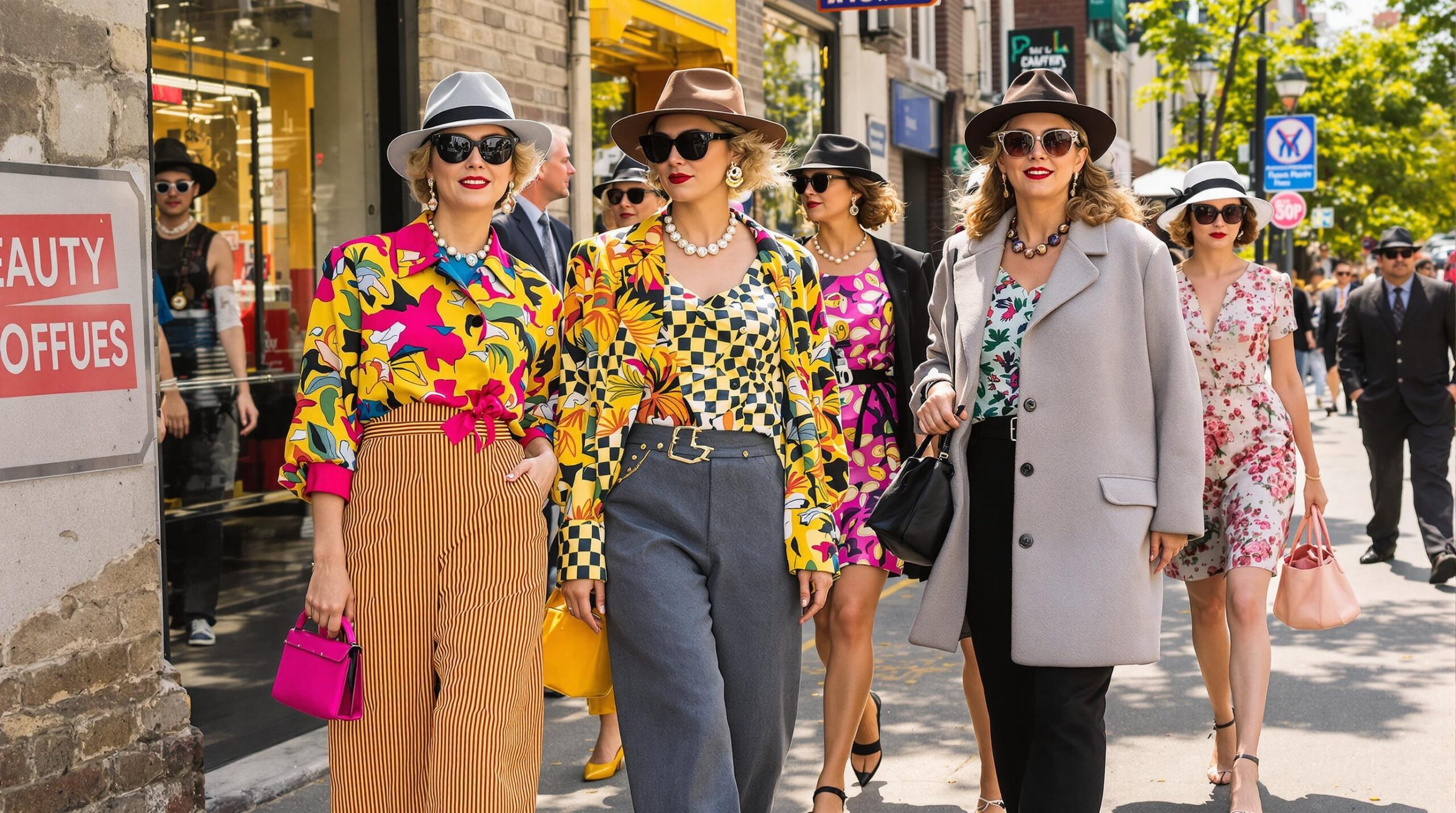Fashion is a cyclical phenomenon, with styles often reemerging every few decades. In recent years, vintage silhouettes have made a strong comeback, captivating the hearts of designers, fashion enthusiasts, and consumers alike. Modern fashion embraces these classic designs, offering a nostalgic nod to the past while catering to contemporary tastes.
The Historical Roots of Vintage Fashion
Vintage fashion refers to clothing that draws inspiration from past eras, typically from the 1920s to the early 1990s. Each era provides distinctive styles, reflecting the cultural, economic, and social climates of its time. The 1920s flapper dresses, with their free-flowing designs, embodied the liberation and joy of the post-war period. In contrast, the structured tailoring of 1940s fashion reflected wartime austerity but also ingenuity in times of scarcity.
As fashion evolved, iconic silhouettes emerged, often associated with influential figures or shifts in popular culture. The 1950s saw the rise of the hourglass figure with cinched waists and full skirts, popularized by style icons like Audrey Hepburn and Grace Kelly. Meanwhile, the 1970s embraced bohemian influences, featuring maxi dresses, flared trousers, and ethnic prints. Each period has left an indelible mark, influencing modern design trends.
The Modern Resurgence of Vintage Styles
Recently, designers have increasingly embraced vintage silhouettes, reinterpreting them with modern twists. This resurgence speaks to a longing for past fashions’ elegance, craftsmanship, and unique features. In doing so, the fashion industry taps into nostalgia and authenticity that resonates with contemporary consumers.
Today’s designers often draw inspiration from multiple eras, blending elements to create eclectic looks that feel timeless and innovative. This approach allows for greater creative expression and personalization, encouraging individuals to define their unique style. Furthermore, the revival of vintage trends also addresses today’s consumers’ growing concerns about sustainability. By valuing the quality and longevity of vintage-inspired garments, fashion becomes not only a style choice but an ethical one.
The Influence of Vintage on Contemporary Design
Contemporary designers are keenly aware of the enduring appeal of vintage styles. Many incorporate retro elements into their collections, adding a modern touch that ensures relevance. For example, some designers integrate 1970s prints and colors with contemporary materials and techniques, offering a fresh take on the past.
Fashion houses such as Gucci, Prada, and Dior have successfully resurrected vintage silhouettes, like flared trousers, A-line skirts, and boxy jackets. The delicate balance between honoring historical styles and innovation allows these designs to captivate a new generation. This interplay between past and present showcases the versatility of vintage fashion’s influence on contemporary design.
Vintage Style and Popular Culture
Popular culture plays a significant role in the resurgence of vintage fashions. The media and entertainment worlds frequently pay homage to vintage silhouettes. From movies and television shows to social media influencers, these platforms highlight retro styles, fueling public interest and trends.
Celebrity fashion choices at red-carpet events continue to inspire audiences, as stars choose vintage-inspired gowns that evoke a sense of glamour and sophistication. Popular platforms like Instagram and TikTok also give rise to influencers who curate outfits that celebrate vintage aesthetics. They skillfully showcase how to integrate these styles into daily wardrobes, reminding audiences that vintage fashion is accessible and versatile.
The Role of Thrift and Vintage Shopping
One of the most compelling aspects of vintage fashion’s resurgence is the role of thrift and vintage shopping. These shopping practices emphasize sustainability while offering an affordable way to explore unique, timeless styles. Thrift stores and vintage boutiques provide a treasure trove of clothing and accessories, ranging from mid-century classics to 90s grunge.
As consumers become conscious of their environmental footprint, thrift, and vintage shopping gain popularity. This form of shopping reduces the demand for fast fashion, encouraging a more mindful approach to style choices. The appeal lies in finding one-of-a-kind pieces that tell a story and offer a personal connection to fashion history.
Sustainability and Vintage Fashion
Sustainability is a central theme in the modern return to vintage silhouettes. Consumers increasingly value fashion purchases that are both stylish and environmentally responsible. By investing in vintage styles, individuals effectively reduce waste, conserve resources, and prioritize quality over quantity.
Many designers prioritize sustainable practices by sourcing eco-friendly materials, using ethical manufacturing techniques, and, in some cases, revamping leftover fabrics and materials for new creations. This thoughtful approach leverages vintage inspiration to recycle and renew, championing sustainability within the fashion industry. Consequently, the vintage aesthetic becomes synonymous with a conscientious lifestyle choice.
Conclusion
Returning vintage silhouettes in fashion highlights a timeless appeal that transcends generations. Rooted in a rich history of change and influence, vintage styles continue to inspire designers and consumers alike. As contemporary fashion leans into this nostalgic narrative, it connects to the past while addressing present-day needs.
Popular culture, sustainability initiatives, and the growing interest in thrift shopping all contribute to the enduring allure of vintage fashion. Current trends serve as a reminder of fashion’s cyclic nature, constantly evolving yet grounded in its past. As we continue to explore the vast spectrum of vintage-inspired design, the future remains open to endless possibilities. Fashion enthusiasts can look forward to a continued dialogue between past and present, embracing the elegance and innovation vintage silhouettes offer.

